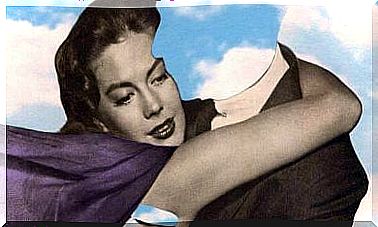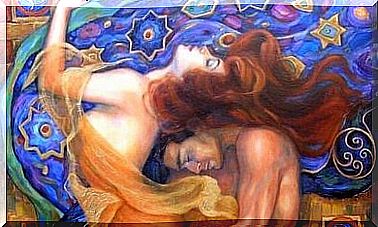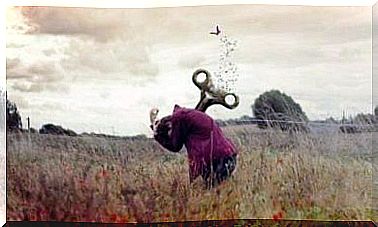Psychopharmaceuticals In Psychiatry That Have Changed Its History

The symptoms of mental illness stem from biological and environmental factors, including harmful patterns of behavior. Many specializations in mental health care offer psychotherapy as treatment. But psychiatrists who are trained physicians can also prescribe drugs specifically designed to reduce the symptoms of mental disorders. These medications are also called psychotropic drugs and have become very common in psychiatry.
Experts have shown that both psychotherapy and psychotropic drugs are effective in treating many mental disorders. Often a combination of the two works best.
The birth of modern psychopharmacology took place in the 1950s, when a series of discoveries changed the course of psychiatry and the lives of millions of patients forever.
The following psychotropic drugs (although some are no longer in use) have changed mental health care dramatically, opening up psychiatry for the treatment of disorders that were once considered incurable. Their discoveries are one of the greatest advances in the history of modern medicine.

The most influential types of psychotropic drugs in psychiatry
1. Medicines that stabilize the mood: lithium carbonate
In 1948, John Cade launched the discovery of lithium as a treatment for bipolar disorder. He was an Australian psychiatrist who first tested lithium because the substance can neutralize uric acid. Then he thought that this acid was the cause of the manic behavior pattern.
It turned out that bipolar disorder had nothing to do with uric acid. But he was not deterred, and lithium proved to be of great help to patients with manic conditions from that moment on.
Lithium was the first modern type of psychotropic drug. Experts showed in 1949 that it was effective as an antimanic drug, before the discovery of chlorpromazine. It became the first drug to be used specifically for a particular mental disorder.
More than seventy years after its discovery, lithium is still the most effective medicine in psychiatry, with an efficacy of more than 70% in patients with bipolar disorder. It also has useful benefits in treating other types of depression.
The discovery of lithium as an effective treatment for bipolar disorder marked the beginning of the revolution in psychotropic drugs in psychiatry. For the first time in history, something could be done to treat serious mental disorders.
Chlorpromazine: the world’s first antipsychotic psychotropic drug in psychiatry
The successful discovery of lithium in 1948 was soon followed by another incredible discovery: the world’s first antipsychotic drug.
In 1949, a French military surgeon in Tunisia named Henri Laborit was looking for a way to reduce surgical shock. He researched an antihistamine called chlorpromazine and discovered that this drug had profound psychological effects on patients when they were administered before surgery.
In 1952, Laborit convinced another psychiatrist to administer the drug to a schizophrenic patient for the first time.
The use of chlorpromazine as the first useful type of neuroleptic swept across Europe by storm. In the United States, on the other hand, where psychoanalysis was at its height, progress was halted.
There, American psychiatrists looked for psychosocial explanations for schizophrenia, such as Gregory Bateson’s double bond theory. Everything that had to do with psychotropic drugs was of little or no interest.
The pharmaceutical company that produced chlorpromazine (then under the brand name Thorazine) then began courting state authorities rather than psychiatrists and medical colleges. They insisted that the drug could save government mental health programs properly with money.
Shortly thereafter, almost all major psychiatric hospitals in the United States had joined the chlorpromazine treatment movement. The introduction of Thorazine in the United States contributed to the deinstitutionalization movement, and the number of hospitalized patients decreased from about 600,000 in 1952 to 160,000 in 1977.
Chlorpromazine is still said to be one of the most effective antipsychotic drugs, especially for seriously ill patients, and has useful applications in emergency situations. Like lithium, it is on the World Health Organization’s list of important drugs.
3. Psychotropic drugs for mood disorders: imipramine
The third discovery in early psychopharmacology was imipramine, the first tricyclic antidepressant drug.
The development of the first antipsychotic substance (chlorpromazine) took place through research on antihistamines. Strangely enough, the synthesis of the first antidepressant drug, imipramine, took place in the same way.
In the early 1950s, pharmaceutical companies were looking for new drugs to compete with Thorazine in the schizophrenia market.
Roland Kuhn, a Swiss psychiatrist employed by the pharmaceutical company Geigy, who was always more interested in depression than schizophrenia, made a breakthrough. He decided to administer this drug for depression, and thus go behind the backs of the drug company that funded his research. The results he got were a revolution for that time.
Within weeks of starting treatment with imipramine , Kuhn’s chronically depressed patients began to regain a sense of purpose, motivation, and hope. Their depressive symptoms, once considered incurable, responded very well to this new drug.
For many years, experts considered imipramine to be the gold standard in the treatment of major depression. Although new drugs in the form of SSRIs and SNRIs have largely replaced its regular use, imipramine remains useful in the treatment of atypical and difficult-to-treat depressions.
4. Psychotropic drugs for anxiety and insomnia: Diazepam
Diazepam (classified as a drug in Sweden), often known internationally as valium, was invented by the chemist Leo Sternbach in Hoffman-La Roche, New Jersey (1963). This was the second benzodiazepine drug to be discovered, after chlordiazepoxide in 1960.
Benzodiazepines became very popular in the 1960s and 1970s as anti-anxiety and sedative drugs. This was because their side effects were less severe than the side effects of barbiturates, the previous generation of sedatives.
An overdose of barbiturates can be fatal. Possibly because of this, the cultural stereotype of being able to easily kill oneself with sleeping pills remains. The effect of benzodiazepines is enhanced by alcohol and then inhibits respiration, which leads to an increased risk of death.
Benzodiazepines are otherwise only fatal in exceptional cases and are relatively safe in case of overdose. But they are also very addictive. As a family, they belong to all three categories: they are soothing, anxious and hypnotic at the same time. It depends on the molecule in question, the dose and its half-life in the blood.

5. The creation of Prozac
For the past 30 years, perhaps the most famous psychotropic drug is Prozac (the substance fluoxetine, sold in Sweden under the brand name Fontex). The discovery was made by Eli Lilly and Company in 1970 and the drug then began to be used in the United States.
Since the launch of Prozac, a number of other SSRIs have been developed. Each of them has a slightly different chemical structure and side effect profile, but is similar in their basic mechanism and effectiveness. The main reason for their popularity is that they produce very few side effects and have a wide range of uses and effects.
The names of the SSRIs are fluoxetine, fluvoxamine, paroxetine, sertraline, citalopram and escitalopram. The discovery of SSRIs was a milestone in psychiatry and they are now the most widely prescribed medications for clinical depression, anxiety disorders and obsessive-compulsive disorder.








